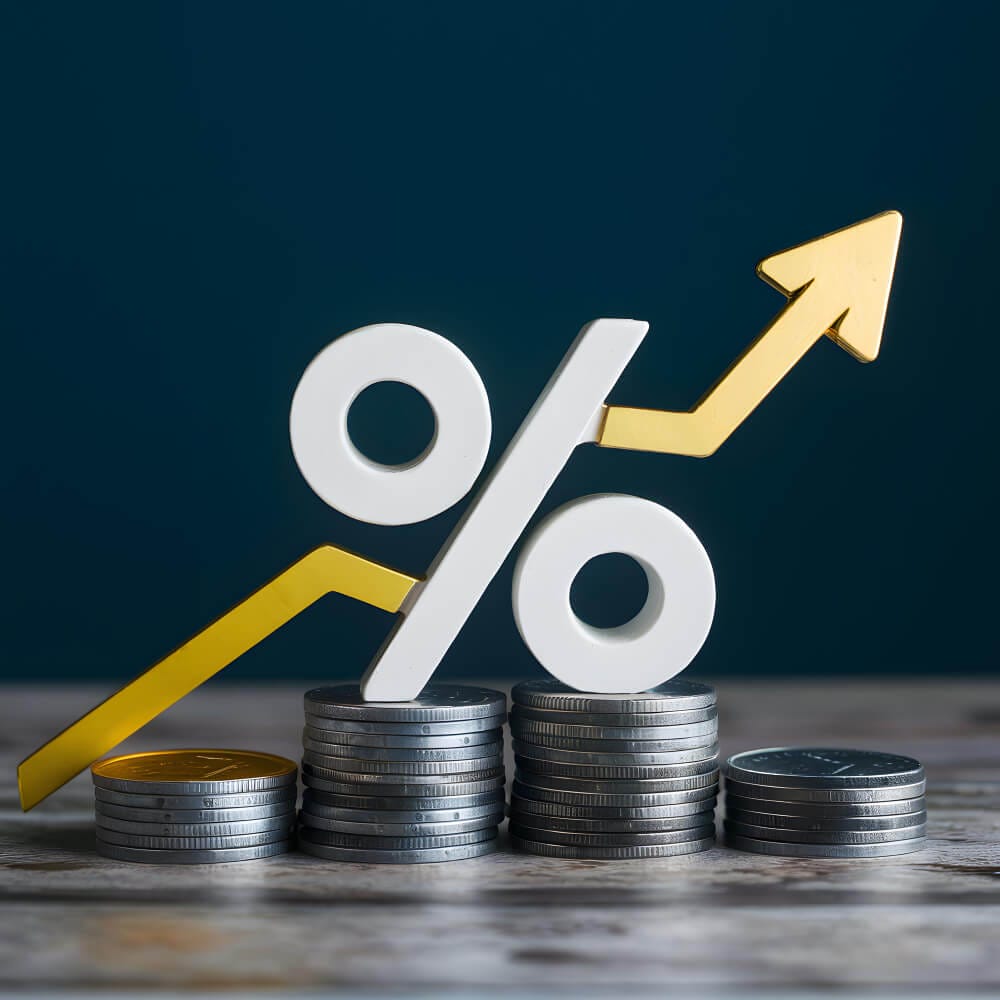When it comes to the world of forex trading, understanding economic indicators is like having a secret map to buried treasure. One of the most significant indicators is the US Core Inflation Rate. But what exactly is it, and why should forex traders care? Let’s dive deep into this topic and uncover the mystery behind this crucial economic measure.

What is the US Core Inflation Rate?
The US Core Inflation Rate is a measure of the change in the cost of goods and services, excluding food and energy prices. These prices are excluded because they tend to be very volatile and can distort the overall inflation picture. By focusing on the core rate, economists and policymakers get a clearer view of long-term inflation trends.
Why Exclude Food and Energy?
Food and energy prices are notorious for their wild fluctuations. Think about how gas prices can skyrocket overnight due to geopolitical tensions or how food prices can swing wildly with a poor harvest season. By excluding these, the core inflation rate offers a more stable and reliable gauge of inflationary pressures.
How is the US Core Inflation Rate Calculated?
The US Core Inflation Rate is calculated using the Consumer Price Index (CPI). The CPI tracks the prices of a basket of goods and services over time. When calculating the core inflation rate, the Bureau of Labor Statistics (BLS) removes the volatile food and energy components from the CPI.

Monthly vs. Annual Inflation Rate
There are two primary ways the core inflation rate is reported: month-over-month and year-over-year. The month-over-month rate shows the percentage change in prices from one month to the next, while the year-over-year rate compares prices to the same month the previous year. Both figures provide valuable insights, but the annual rate is often more significant for long-term analysis.
Why is the Core Inflation Rate Important?
The core inflation rate is a critical indicator for several reasons:
- Monetary Policy Decisions: The Federal Reserve uses the core inflation rate to guide its monetary policy. If inflation is rising too quickly, the Fed may raise interest rates to cool the economy.
- Economic Health Indicator: A stable core inflation rate suggests a healthy economy. Conversely, high or rapidly increasing inflation can indicate an overheating economy.
- Investment Decisions: Investors, including forex traders, use the core inflation rate to make informed decisions. Rising inflation can erode purchasing power, impacting everything from bond prices to stock market returns.
Impact of Core Inflation Rate on Forex Markets
Now, let’s get to the meat of the matter: how does the US Core Inflation Rate impact the forex markets? This is where things get really interesting for forex traders.
Influence on USD Value
The core inflation rate directly influences the value of the US dollar (USD). When the core inflation rate is high, it often leads to higher interest rates as the Federal Reserve takes action to curb inflation. Higher interest rates make the USD more attractive to investors seeking better returns, driving up its value.
Currency Pairs and Core Inflation
Forex trading revolves around currency pairs, such as EUR/USD or GBP/USD. The core inflation rate impacts these pairs by altering the relative strength of the USD. For instance, if the US reports a higher-than-expected core inflation rate, the USD might strengthen against other currencies.

Trading Strategies Based on Core Inflation Rate
Savvy forex traders don’t just watch the core inflation rate; they use it to inform their trading strategies. Here are a few approaches to consider:
Interest Rate Differentials
Traders often look at interest rate differentials between countries. If the US core inflation rate is rising and leading to higher interest rates, traders might go long on the USD against currencies from countries with lower rates.
Inflation Hedging
Inflation erodes the value of money over time. To hedge against this, some traders invest in assets that typically perform well during inflationary periods, such as gold. They might also short currencies expected to depreciate due to high inflation.
Technical Analysis
While fundamental analysis focuses on economic indicators like the core inflation rate, technical analysis looks at price patterns and trends. Combining both approaches can provide a more comprehensive trading strategy.

Challenges of Trading Based on Core Inflation Rate
While the core inflation rate is a powerful tool, it’s not without its challenges. Forex traders need to be aware of these potential pitfalls:
Market Expectations
Sometimes, the actual core inflation rate differs from market expectations. When this happens, it can lead to sharp and unexpected market movements. Traders must stay on their toes and be prepared for volatility.
Lagging Indicator
The core inflation rate is a lagging indicator, meaning it reflects past economic conditions. Traders need to balance this with leading indicators, which provide insight into future economic trends.
Global Economic Factors
The forex market is influenced by a myriad of factors beyond the US core inflation rate. Geopolitical events, economic data from other countries, and global market sentiment all play a role. Traders must consider the bigger picture.
Real-World Example: Core Inflation Rate and Forex
Let’s take a look at a real-world example to see how the core inflation rate can impact forex markets.

The 2020 Pandemic Impact
During the COVID-19 pandemic, the core inflation rate in the US saw significant fluctuations. In early 2020, as the economy slowed down, the core inflation rate dropped. The Federal Reserve responded by lowering interest rates to near-zero levels.
Market Reaction
The lower interest rates made the USD less attractive to investors, leading to a depreciation of the dollar against other major currencies. Traders who anticipated this move profited by shorting the USD.
Recovery Phase
As the economy began to recover and inflationary pressures built up, the core inflation rate started to rise. In response, the Federal Reserve signaled potential rate hikes, which led to a strengthening of the USD. Forex traders who stayed ahead of these developments were able to capitalize on the market movements.
Tips for Forex Traders
For those venturing into forex trading with a focus on the core inflation rate, here are some tips to keep in mind:

Stay Informed
Regularly monitor economic reports, including the CPI and core inflation rate. Staying informed helps you anticipate market movements and adjust your trading strategies accordingly.
Diversify Your Portfolio
Don’t put all your eggs in one basket. Diversify your investments to manage risk effectively. Consider trading multiple currency pairs and investing in other asset classes.
Use Stop-Loss Orders
The forex market can be highly volatile. Protect yourself from significant losses by using stop-loss orders. These orders automatically sell your position if the price moves against you beyond a certain point.
Practice Risk Management
Never invest more than you can afford to lose. Use leverage cautiously, as it can amplify both gains and losses. Implementing a solid risk management strategy is crucial for long-term success.

Leverage Technology
Take advantage of trading platforms and tools that provide real-time data and analysis. Automated trading systems can also help execute trades based on predefined criteria, reducing emotional decision-making.
The Future of Core Inflation and Forex Trading
Looking ahead, the relationship between the core inflation rate and forex markets will continue to evolve. As the global economy changes, so too will the factors influencing inflation and currency values.
Emerging Market Trends
Keep an eye on emerging market trends. Technological advancements, demographic shifts, and changes in consumer behavior can all impact inflation and forex markets. Staying ahead of these trends can give you a competitive edge.

Central Bank Policies
Central banks worldwide are adapting their policies in response to new economic challenges. Understanding these policy shifts and their implications on core inflation can help you make better-informed trading decisions.
Global Interconnectedness
The global economy is more interconnected than ever. Events in one part of the world can have ripple effects on inflation and currency values elsewhere. Being aware of global economic dynamics is essential for successful forex trading.
Conclusion
The US Core Inflation Rate is a key indicator that holds significant sway over the forex markets. By understanding its implications and incorporating this knowledge into your trading strategies, you can navigate the complex world of forex trading more effectively. Remember, while the core inflation rate is a powerful tool, it’s just one piece of the puzzle. Stay informed, diversify your investments, and practice sound risk management to achieve long-term success.
FAQs
1. What is the difference between headline inflation and core inflation?
Headline inflation includes all items in the Consumer Price Index (CPI), while core inflation excludes food and energy prices due to their volatility. Core inflation provides a clearer view of long-term inflation trends.
2. How often is the US Core Inflation Rate reported?
The US Core Inflation Rate is reported monthly by the Bureau of Labor Statistics (BLS). It’s included in the monthly Consumer Price Index (CPI) report.
3. Can the core inflation rate impact my daily life?
Yes, the core inflation rate can affect your purchasing power, interest rates on loans and savings, and overall economic stability. It’s a crucial factor in the broader economic landscape.
4. How can I use the core inflation rate in my forex trading strategy?
You can use the core inflation rate to anticipate interest rate changes, which affect currency values. Incorporate it into your analysis alongside other economic indicators for a well-rounded trading strategy.
5. What tools can help me track the US Core Inflation Rate?
Several financial news websites, government reports, and trading platforms offer real-time data on the core inflation rate. Subscribing to economic calendars and news alerts can also keep you updated.

